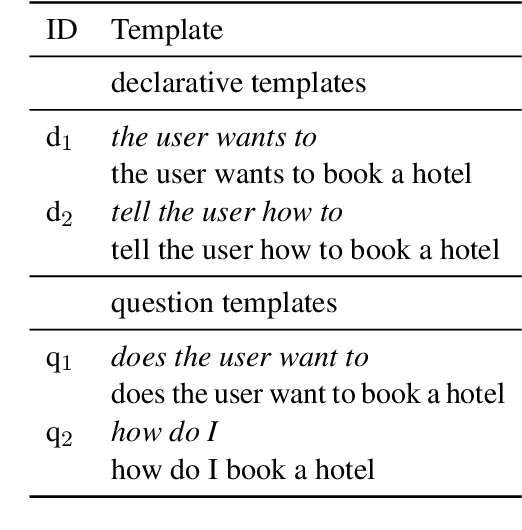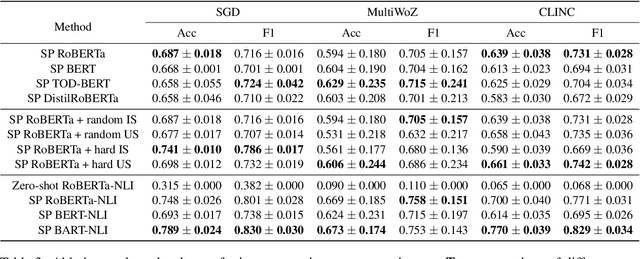Template-based Approach to Zero-shot Intent Recognition
Paper and Code
Jun 22, 2022



The recent advances in transfer learning techniques and pre-training of large contextualized encoders foster innovation in real-life applications, including dialog assistants. Practical needs of intent recognition require effective data usage and the ability to constantly update supported intents, adopting new ones, and abandoning outdated ones. In particular, the generalized zero-shot paradigm, in which the model is trained on the seen intents and tested on both seen and unseen intents, is taking on new importance. In this paper, we explore the generalized zero-shot setup for intent recognition. Following best practices for zero-shot text classification, we treat the task with a sentence pair modeling approach. We outperform previous state-of-the-art f1-measure by up to 16\% for unseen intents, using intent labels and user utterances and without accessing external sources (such as knowledge bases). Further enhancement includes lexicalization of intent labels, which improves performance by up to 7\%. By using task transferring from other sentence pair tasks, such as Natural Language Inference, we gain additional improvements.
 Add to Chrome
Add to Chrome Add to Firefox
Add to Firefox Add to Edge
Add to Edge